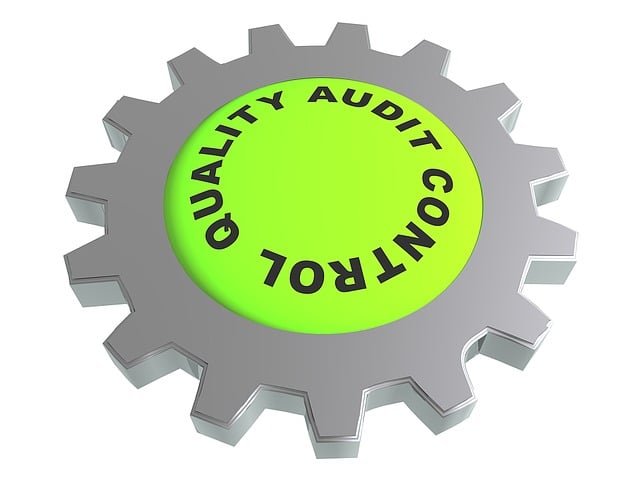Regular SEO Audits are vital for e-commerce success, optimizing websites for search engines while adapting to market dynamics. A comprehensive audit analyzes on-page content (keywords, meta tags), off-page factors (backlinks, social media), user experience, and technical aspects like site speed and mobile responsiveness. Tools like Google Analytics and SEO platforms (Ahrefs, SEMrush) provide data for informed optimizations. Key focus areas include product page optimization, local SEO for geo-targeted businesses, and continuous monitoring to adapt to algorithm changes. By implementing these strategies, e-commerce sites enhance visibility, drive organic traffic, and boost conversions.
In today’s digital landscape, a robust SEO strategy is paramount for e-commerce success. A thorough SEO audit serves as a compass, guiding businesses through the complex web of optimization opportunities. This article delves into the essential elements of an effective e-commerce SEO audit, from understanding its critical role to key components, indispensable tools, and strategic considerations like on-page, off-page, technical, and local SEO. By the end, you’ll equip yourself with a comprehensive framework for enhancing your online store’s visibility and driving organic traffic.
Understanding the Importance of SEO Audits for E-commerce

In today’s digital landscape, e-commerce businesses face intense competition and an ever-evolving online environment. This is where a comprehensive SEO Audit becomes indispensable. It serves as a critical tool to assess and optimize your website’s visibility and performance in search engine results pages (SERPs). By meticulously analyzing various factors like on-page content, technical aspects, backlinks, and user experience, an SEO audit reveals hidden potential and pinpoints areas for improvement.
Regular SEO Audits are essential for staying ahead of the curve. They help identify changes in algorithm updates, competitor strategies, and shifting consumer behavior. Through this process, businesses can enhance their search engine rankings, attract more organic traffic, and ultimately drive conversions. It’s a strategic step that enables e-commerce sites to compete effectively, ensuring they remain visible and relevant in a dynamic digital market.
Key Components of an Effective E-commerce SEO Audit

A comprehensive SEO Audit for e-commerce sites involves examining several critical components to ensure optimal search engine visibility and performance. The first step is analyzing on-page elements, including keyword optimization, meta tags, header structures, and content quality. E-commerce platforms should prioritize well-researched, relevant keywords integrated naturally within product descriptions, titles, and URLs to attract the right audience.
Additionally, an effective SEO Audit assesses off-page factors such as backlinks and social media presence. High-quality backlinks from reputable sources signal to search engines that a site is valuable and trustworthy. Social media engagement indicates a brand’s popularity and can drive traffic, further enhancing a site’s SEO. Other vital aspects include site speed optimization, mobile responsiveness, user experience, and regular analysis of analytics data to track progress and make data-driven improvements.
Tools Essential for Conducting a Comprehensive Audit

Conducting a comprehensive SEO audit for an e-commerce site requires a robust set of tools to ensure every corner is scrutinized effectively. Start with platform-specific analytics like Google Analytics, which provides valuable insights into user behavior and traffic sources. These insights are crucial for identifying areas of improvement in your site’s structure and content strategy.
Complement these with SEO tools such as Ahrefs or SEMrush, which offer a wealth of data on keyword rankings, backlink profiles, and competitor analysis. These tools help uncover low-hanging fruits in terms of optimizing meta tags, improving page load speeds, and identifying gaps in your product listings that could be leveraged for better search visibility.
Analyzing On-Page SEO Performance and Opportunities

A comprehensive SEO audit for e-commerce sites begins with a meticulous analysis of on-page performance. This involves scrutinizing key elements like titles, meta descriptions, header tags, and content to ensure they align with best practices and current search engine algorithms. By evaluating these components, you can identify areas where optimization is needed, such as improving keyword density or enhancing the relevance of content.
During this process, it’s crucial to consider user experience as a core metric. Search engines prioritize sites that offer fast loading speeds, mobile-friendliness, and intuitive navigation. A well-structured site with high-quality, optimized content not only satisfies users but also signals to search engines the value and reliability of the e-commerce platform, potentially boosting rankings and driving higher organic traffic.
Optimizing Product Pages for Better Rankings

Optimizing product pages is a crucial step in an SEO audit for e-commerce sites, as these pages are often the primary touchpoint between consumers and your brand. Each product page should be meticulously crafted to not only showcase products but also to align with search engine optimization best practices. This involves ensuring keyword-rich meta titles and descriptions that accurately reflect the content on the page while also appealing to potential customers. Well-optimized product URLs, which include relevant keywords, are another critical aspect.
Additionally, high-quality, visually appealing images with descriptive file names and alt tags can significantly enhance SEO performance. These elements not only improve the user experience but also provide search engines with valuable context about the content on the page. Incorporating clear and concise product descriptions that include relevant keywords naturally can boost rankings as well. Regularly updating product content to keep it fresh and relevant is equally important, as search engines favor dynamic, up-to-date websites.
Evaluating Off-Page SEO Strategies and Link Building

During a comprehensive SEO audit for an e-commerce platform, evaluating off-page SEO strategies and link building is paramount. This involves scrutinizing the quality and quantity of backlinks guiding traffic to the website. High-authority, relevant links from reputable sources significantly boost search engine rankings. Conversely, low-quality or spammy links can have a detrimental effect on the site’s visibility.
An effective audit will assess the diversity of anchor texts used in backlinks, ensuring natural linking patterns. It also considers the geographical relevance of these links, aligning with the target audience’s demographics. By identifying opportunities for improvement and disavowing poor-quality links, businesses can enhance their off-page SEO, leading to better search engine placements and increased organic traffic during the audit process.
Technical SEO Issues and Their Impact on Online Stores

Online stores, much like their physical counterparts, require a robust Technical SEO strategy to ensure optimal visibility and performance on search engines. During an SEO audit, technical aspects often reveal hidden obstacles hindering a site’s success. Common issues include slow page loading times, poorly structured URLs, mobile-unfriendly designs, broken links, and inadequate XML sitemaps—all of which can significantly impact user experience and search rankings.
These technical problems create a ‘crucible’ where potential customers may become disengaged, leading to high bounce rates and reduced conversions. A comprehensive SEO audit identifies these issues, allowing for informed decisions and necessary adjustments. By addressing these technical SEO concerns, e-commerce sites can enhance their accessibility, improve search engine crawlers’ understanding of the content, and ultimately drive better online sales.
Local SEO Considerations for Geo-targeted Businesses

When conducting an SEO audit for e-commerce, especially for businesses with a geo-targeted focus, local SEO considerations are paramount. Understanding and optimizing your online presence for specific geographic locations is crucial to attracting local customers and increasing sales. This involves claiming and verifying Google Business Profiles (GBP) for each target location, ensuring consistent NAP (Name, Address, Phone number) information across all directories and platforms.
Additionally, crafting location-specific content that resonates with the needs and preferences of nearby customers can significantly boost your search rankings. Incorporating local keywords naturally into product descriptions, category pages, and blog posts, as well as leveraging customer reviews to build trust and credibility, are proven strategies. Local SEO isn’t just about appearing in local search results; it’s about fostering a sense of community and establishing your e-commerce business as a trusted local resource.
Post-Audit Implementation Plan and Continuous Optimization

After conducting a comprehensive SEO audit, the next critical step is developing a robust implementation plan. This strategy should prioritize actionable insights gained from the audit, focusing on areas with the highest potential impact on search rankings and customer conversion rates. A well-structured plan typically involves setting clear goals, identifying essential optimizations, assigning responsibilities, and establishing timelines.
Continuous optimization is key to staying ahead in the dynamic world of e-commerce SEO. Regularly monitor website performance using analytics tools to track keyword rankings, organic traffic, and user behavior. Use these insights to refine strategies, implement further improvements, and adapt to evolving search engine algorithms. This ongoing process ensures that your e-commerce platform remains optimized, competitive, and aligned with customer needs and market trends.
